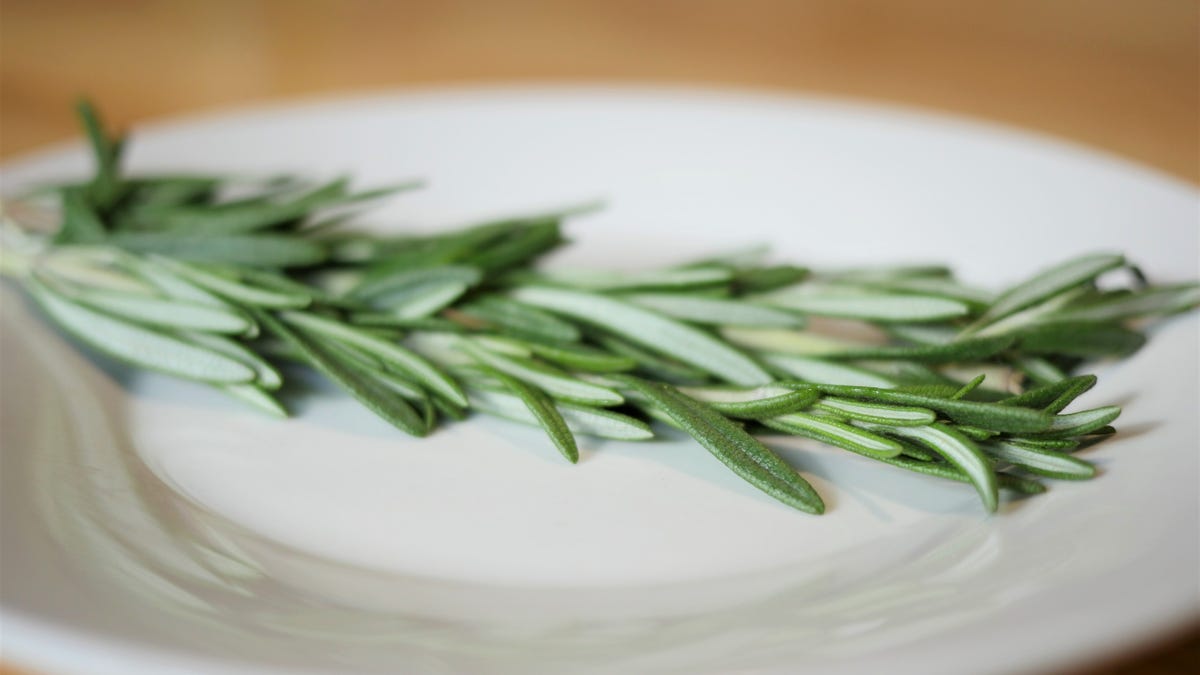 Why You Can Trust CNET
Why You Can Trust CNET Save Money by Growing Herbs at Home Yourself: Follow These Easy Tips
Growing fresh herbs is much easier than you may think.

Rosemary is one of the easiest herbs to grow, dry and use.
US families have so many expenses to balance from monthly bills to rent to gas, and costs can pile up quick. It's possible to save some money by simply changing a few habits around the house like doing laundry the energy-efficient way and making your own coffee instead of buying from a coffee shop, but I also recommend saving money on groceries.
Specifically, I suggest planting and growing your own herbs. They grow well indoors and outdoors. And that eventually translates to fewer trips to your local grocer. Plus, a hint of fresh basil or rosemary on your pasta, poultry, roasted meats and veggies will punch up the flavor of any dish.
Growing your own herbs really isn't difficult (so don't fret if you have a black thumb). All that's required are proper materials, planting pots and a workable plan. Here's what you need to do. (You can also check out whether or not it's cheaper to buy groceries online than in the store, and if meal kits are more cost-effective than buying individual ingredients.) And once you master growing herbs, you can move on to grow your own vegetables.
1. Pick some pots
One huge appeal of a home-grown herb garden is it's always ready for action. Need to spice up that pasta or chicken roast? Just grab a few leaves of basil, sage or a sprig of thyme. With a pot, you can place your herbs in convenient locations, like on your porch, your deck or your kitchen counter.
The material of your container can vary. Clay, wood, resin and metal are all options. What's most important is that it provides enough drainage. Any pot or planter you use must let excess water escape, which is why most planting container bottoms have holes in them.
Mason jars are pretty to look at, but they don't make the best herb gardens. Without proper drainage, your herbs will eventually experience root rot.
Pick a container that matches the size of the herbs you'll grow. Choose something too large and your plants will spend excess energy growing their roots. A cramped planter will cause your herbs to become rootbound (in other words, pot-bound). That'll hamper their nutrition, stress them or even kill them.
Flat-leaf parsley is easy to grow and has lots of flavor.
2. Choose your herbs
If this is the first time you've tried growing herbs, start simple. Parsley, mint and basil are good options for pot-growing. They all tend to grow prolifically and don't mind frequent harvesting. Here are some examples of staple herb varieties and their characteristics.
Basil
Relatively easy to grow, basil prefers sunny locations. It also does best in rich soil that's well-watered.
Mint
With an aggressive growth rate, mint is best in its own container and above ground. It can handle shade but it's better suited to strong sunlight.
Oregano (Greek)
This herb has small and flavorful leaves. It requires full sunshine and lots of drainage. Greek oregano is also a tender perennial that you'll have to bring inside during winter months.
Parsley (flat-leaf)
Chefs prefer flat-leaf parsley over curly since it has more flavor. Parsley does best in moist, well-drained soil and can grow in partially shaded areas.
Thyme
This herb has heavily scented leaves and prefers less water. You do need to give thyme exposure to full sunlight and well-drained soil.
Rosemary
The resinous leaves of rosemary are highly aromatic. The herb requires cool climates with plenty of sun and moist (not wet) soil. It's also best to bring rosemary indoors for the winter.
3. Forget seeds, use starter plants
Unless you're an experienced gardener, use starter plants for your herbs. This will save you two to three weeks of grow time and increase your chances of a successful harvest.
Still not sure where to start? Read more about the best places to buy plants online and the best indoor garden for every type of gardener.
4. Get the right soil
When it's time to plant, use potting soil -- not garden soil. Potting soil drains water more effectively. The former is lighter and porous, while the latter is dense and traps (or blocks) moisture inside containers. If you don't have one, pick up a garden trowel. They're good digging holes, handling soil and removing weeds when necessary.
Don't forget to water your herbs regularly.
5. Care and harvesting
It takes constant, regular care for herbs to flourish. That means you must water them on a consistent schedule. You'll need to harvest them often, too, since this primes them for new growth. Just be sure to match any treatment of your herbs to their specific variety.
Want to learn more about growing your own food? Read our guide on growing your own vegetables and our tips on growing your own garden indoors.
More money-saving tips for the kitchen
- Try This Easy Stove Trick to Save Money in the Kitchen
- Spend Less on Groceries by Stretching How Long Your Food Lasts. Here's How
- Whole Foods Is No Longer Whole Paycheck: How Shopping There May Actually Save You Money
- The Best Cheap Steak Cuts
- Yes, You Can Buy Good Wine for Cheap. Here's What to Look For
- Save Money Using a Slow Cooker or Instant Pot Instead of the Oven
- Cut Costs Around the House Now. Here's How

